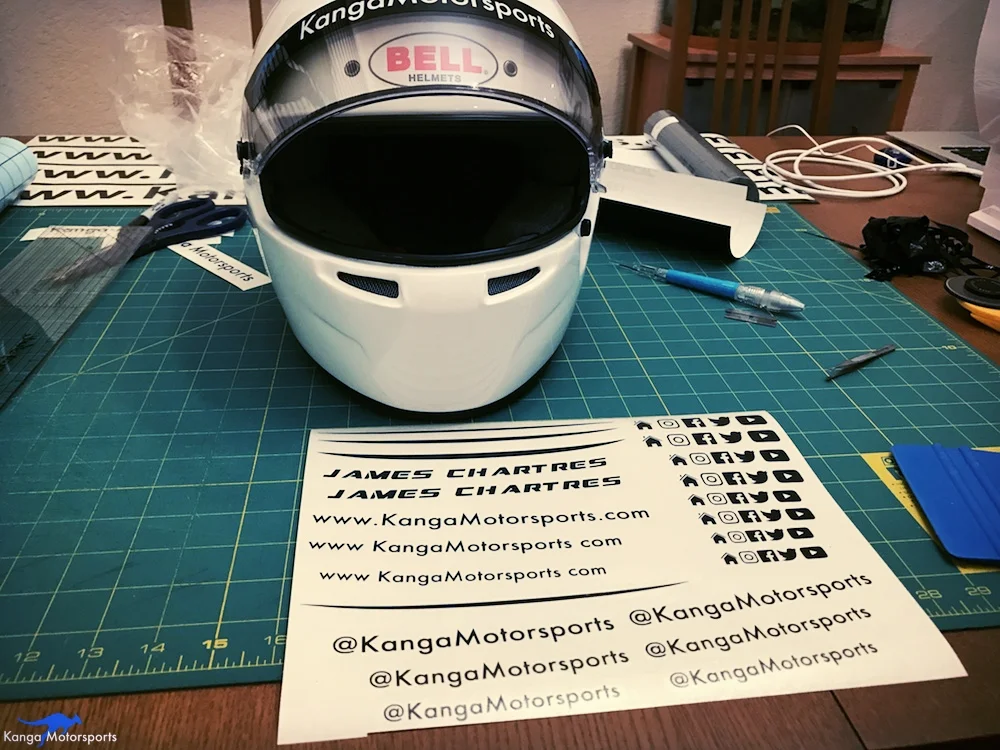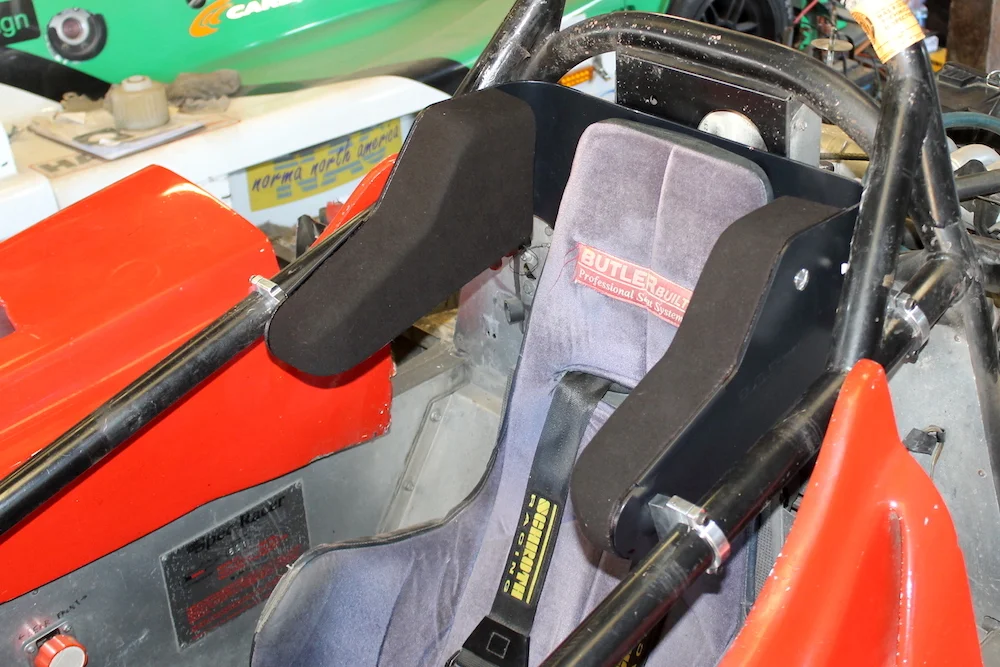Racecar Safety Harnesses
Safety belts, race car belts or race harnesses whatever you call them they are a crucial element of your safety gear. Belts need to be changed out periodically or as the rules and standards get updated. What do you need to know? What new race harnesses should you buy? Like most things racing it depends… First check the rules of the sanctioning body, understand SFI & FIA ratings, then pick the features you want and finally decided on a manufacturer.
Rules and Standards
It is important to check your rule set before deciding and purchasing racing harnesses. The last thing you want to do is go through the hassle of buying and installing an expensive set of race harnesses only to find out at the track that they do not meet the rules.
Depending on the rules of your sanctioning body the belts will most likely need to meet either SFI or FIA standards. The SFI standards are 16.1, 16.2, 16.5 and 16.6 which determine the load ratings and stringent safety features needed. The FIA belt standards are 8853-2016 and 8854/98 for older historic cars.
SFI vs FIA
The main differences between SFI and FIA rated belts is the material type Polyamide(Nylon) vs. Polyester and the usage of the belts. The strength of polyester harnesses degrades less than polyamide when exposed to UV light. Belts manufactured to the FIA standards have 5 years starting January 1 of the year after manufacture. This can mean 5-6 years depending on the time of manufacture with an expiration date printed on the belt labels. Belts made to SFI standard are valid for 2 years from the month of manufacture bunched into the label on the belts
5 point vs 6 point vs 7 point
The number of points refer to the number of attachments location to car chassis or frame the most common type you will see in road racing is 6 point harnesses.
Photo courtesy of Robert Vierhout of Ten Tenths Podcast.
5 point harnesses have two lap or hip belts, two shoulder belts and a single crotch belt.
6 point harnesses have two lap or hip belts, two shoulder belts and two crotch belts.
7 point harnesses are a newer type meeting SFI 16.6 and include a Negative G strap that holds the Cam-Lock in position in addition to two lap belts, two shoulder belts and two anti-submarine belts.
Pull Up / Pull Down
Pull down is generally easier if you are strapping yourself into the car. Often most club racers who either don’t have or have a limited support crew will choose pull down belts.
Pull Up belts are easier if you have a crew member helping to strap you in. You will often see Pull Up belts used during driver changes in endurance racing where the exiting driver or crew member helps strap in the next driver.
Some belts are reconfigurable allowing you to have them either as pull up or pull down depending on your desired configuration.
The other adjustments on belts are located on the each harness for tightening down once seated. You should look at how the adjusters work and what release mechanism they use. Newer designs include small straps that can be useful to undo or loosen the belts.
Latch Link or Cam-Lock
There are two common locking mechanisms Latch Link and Cam-Lock. They both work great and will do the job. Latch link belts tend to be cheaper than Cam-Lock harnesses. Often the choice comes down to personal preference.
Photo courtesy of Robert Vierhout of Ten Tenths Podcast.
The Latch Link mechanisms uses a clip in latch with locking detent pin that holds all the belts in place. Latch links are often preferred or mandated in dirt and off-road racing since the mechanism is less susceptible to grime and dirt build up than the Cam-Lock. At first they might seem complicated but once you get use to them they are very easy to use.
The Cam-Lock mechanism is more similar to a passenger car seat belt where the belts clip into place. But there is no big red button to release, instead a pivot is rotated to release the belts. They are relatively easy to use and just like Latch Links once you get use to them they become second nature.
The decision is really up to you. I find the Latch Link bulkier and harder to use, so I prefer to use Cam-Locks for their simplicity and I can belt myself in by feel without looking. But with time and practice I am sure the Latch Link would also become second nature, I have just almost always used Cam-Lock and so they are most familiar to me.
2inch vs 3 inch Belts
The biggest change in racing harnesses in recent years is due to the wide spread introduction of head and neck restraint devices. In years past some 3 inch shoulder belts have featured a tapered design with a 2 inch wide belt widening to 3 inches at the adjustment point. Part of the reason was the two inch portion of the belt better fit and integrated with tether type head and next restraints such as the HANS device. This resulted in manufacturers developing stronger 2 inch wide webbing to replace the older 3 inch wide designs. Consequently, newer harnesses have transitioned to using the stronger 2 inch wide belts for all attachment points. A study found that 2 inch lap belts actual better fit the pelvic bone.
Bolt-In, Clip-In, Roll & Ladder Bars
Harnesses are connected to the car chassis by four methods either high grade bolted fasteners, clips, wrapped around roll bars or chassis mounted ladder bars. Harnesses can be ordered or purchased with whatever ends you need, some harnesses have features that allow you to re-web them yourself.
Belts with clip in ends mount to eye bolts mounted to the chassis or frame with reinforcement plates. Once clipped in place the clip mechanism must be secured with either safety wire, cotter or split pin. The wire or pin is slotted and secured through the hole preventing the mechanism from coming undone.
Bolted in ends are directly bolted to chassis or frame mounts using high grade fasteners.
Ladder bars provide a mounting location for you to loop the belts through. There is a specific method for wrapping the harness so that it doesn’t come undone, follow the manufacturer instructions.
Similar to ladder bars the belts can be wrapped around bars in the roll cage. Many roll cages have braces built in specifically for mounting race harnesses, especially the shoulder harnesses. The harness must use spreaders and other locating features to prevent them from moving side to side.
Manufacturer Options
Now you know what the rules allow, the difference between SFI and FIA standards, the features to consider and now you need to pick a manufacturer. You are probably also looking at your budget and how much you have to spend but the most important thing is make sure they are sourced from a reputable high quality manufacturer. Careful of those super cheap belts from someone you have never heard of safety equipment is not the place to cheap out.
Good luck buying your next set of belts, if you need help putting them in the race car check out our installation guide.
























We decided to replace the old bent and misshaped suspension rockers with the new lighter and stiffer tubular rockers. The step by step guide should make it easier for those attempting the work themselves.